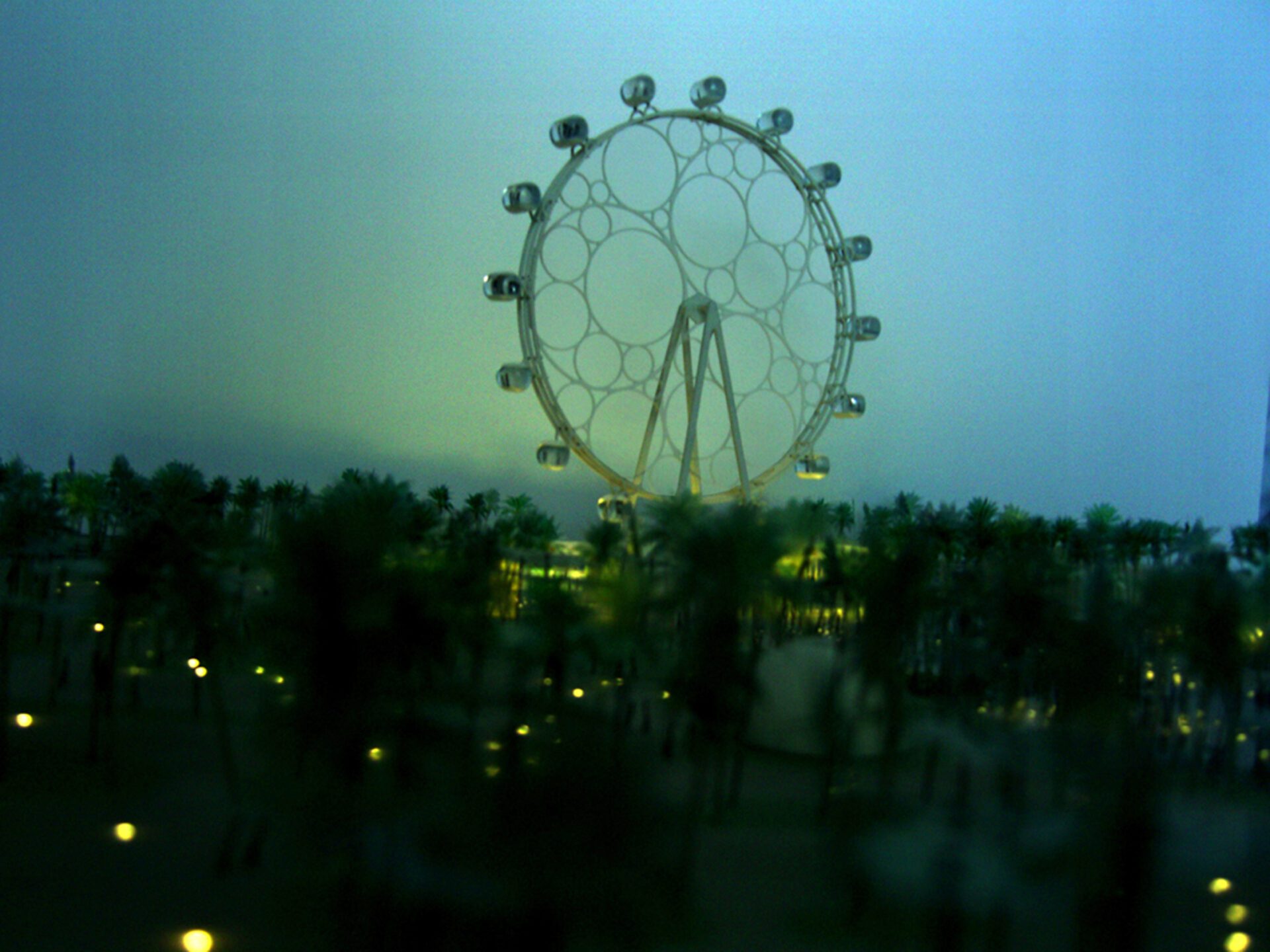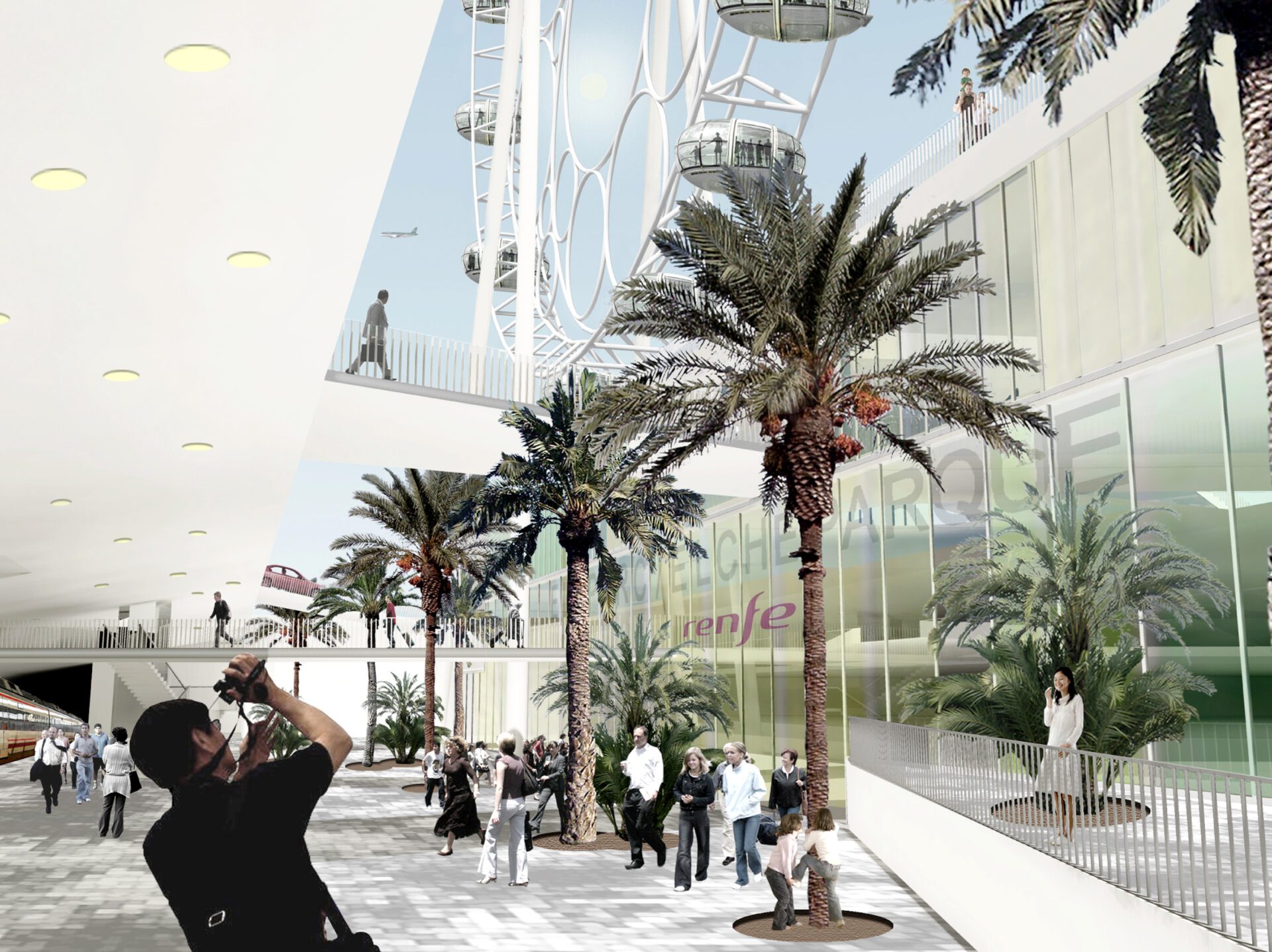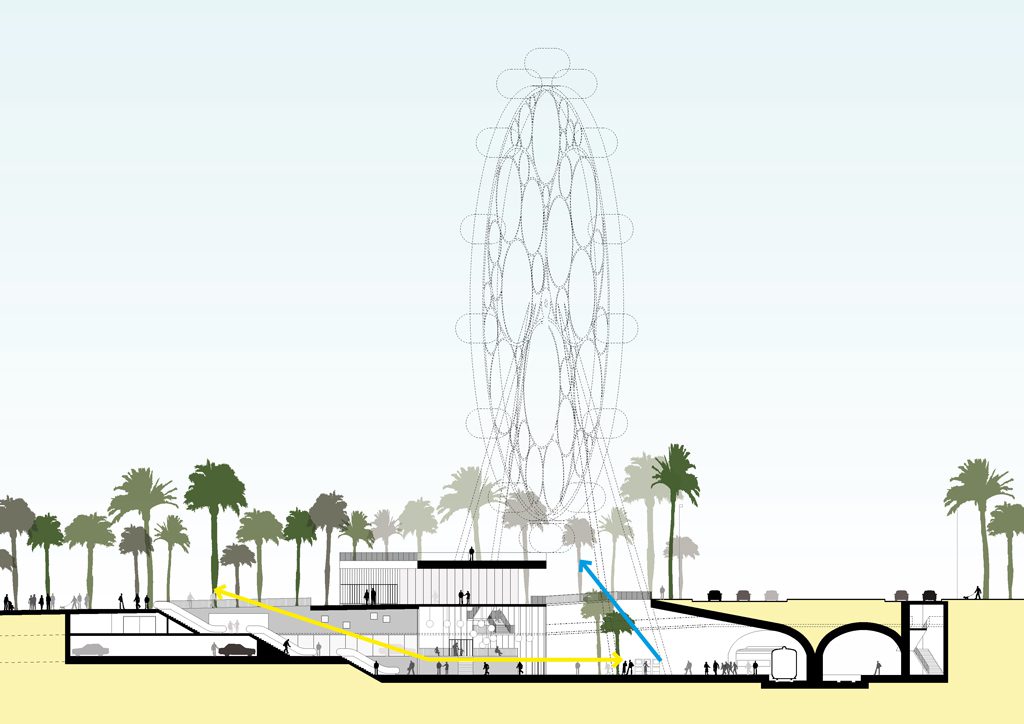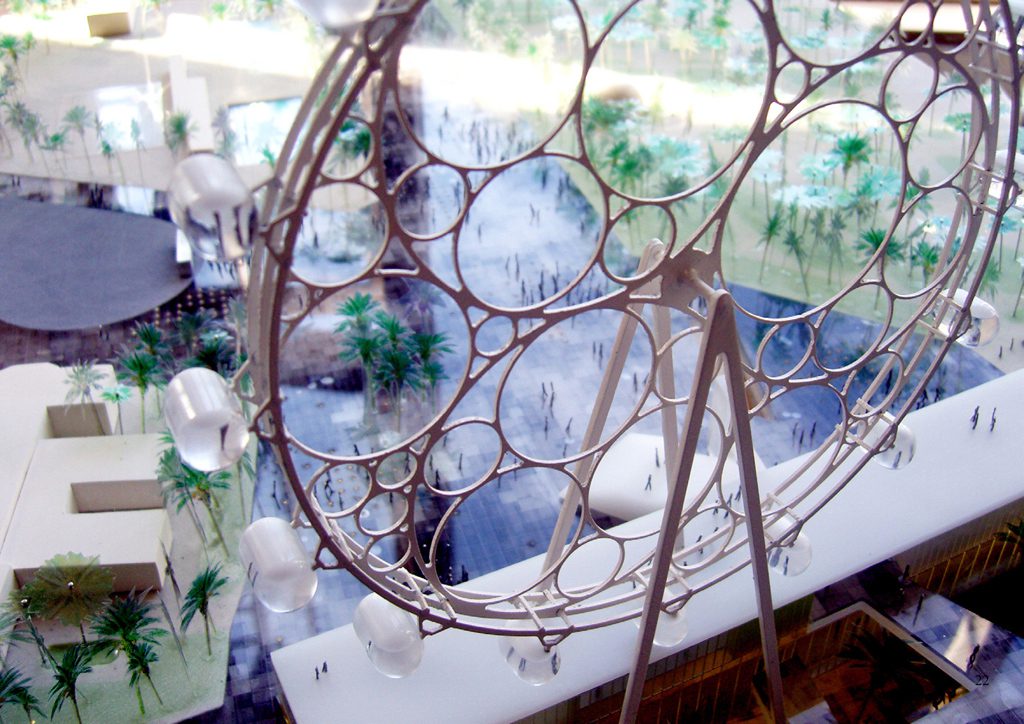Mirador del Palmeral, The Design of an Oxymoron
STAR strategies + architecture


Short description
Elche Mirador, The Design of an Oxymoron
In 2009 our office won the International competition for the Mirador del Palmeral (Palm Grove’s Viewpoint), in Elche, Spain with the simplest proposal, yet the most controversial project the office had ever undertaken up to this point. We worked on the project for almost 2 years until a change in the political composition of the City Government stopped it*.
The two-phased competition received a lot of attention, not only because renowned firms such as MVRDV, SANAA, Foster, Abalos+Sentkiewicz, and Lapeña&Torres were invited to participate, but because our office, as a young and “unknown” office getting through the first, open phase, won the competition eventually, and even with a strategy, rather than a design. I trusted the simplicity of a Ferris wheel to meet all the requirements of the brief and more, which surprised and convinced a jury of reputable professionals - and the City Mayor, who became its strongest supporter - that architectural thinking is stronger than even architecture itself.
The Mayor of Elche organized the competition with the requirement that the project should “provide the city with an EMBLEMATIC element to promote the Palmeral of Elche” (quote from the competition brief). This raised the challenge of designing a humble icon, and icon that deviated the attention to something else, which is a true oxymoron.
In our careers as architects, the competition for the Mirador del Palmeral was our first chance to create an emblem for the city in which the landscape plays a crucial role, whereby evoking admiration for this landscape is the raison d’être of the icon.
Moreover, in this period of financial collapse (2009) and extreme preoccupation with sustainability, it would be hypocritical to close our eyes and produce another icon similar to all the previous ones.
The cultural landscape of palms that constitutes the Palmeral of Elche dates back to the 10th century, when much of the Iberian Peninsula was under Arab rule. This great patchwork of agricultural plots (huertos) was listed as a UNESCO World Heritage Site in the year 2000. The palm grove extends over approximately half of the area of the city. Due to the loss of its original use, it is becoming more difficult to integrate the Palmeral into city life. Most of the Huertos remain empty and are deteriorating. There is not a single viewpoint in the city where the huertos system of palms can be seen and understood. We believe that by building this viewpoint, tourists and inhabitants will be able to understand the Palmeral of Elche for the first time as a system of huertos, and recognise its strong presence in the city. Although the intervention should not eclipse or even compete with the importance of the Palmeral, it should be significant enough to attract tourism and regenerate the economy of the City. Thus, we searched for an atemporal emblem; intelligent and flexible; capable of fulfilling these requirements within a budget of €10 million. We need an imaginative solution.
We proposed a wheel for Elche. The wheel is a strategy. The wheel is resistant to fashion, style, and time. It is a timeless emblem. Its assembly is completely reversible (if one day it might not be useful anymore). As the wheel does not consume the total budget, we can also invest in the creation of adjacent public spaces and the renovation of the railway station. The wheel is an intelligent and rational structure: representative and beautiful, powerful and transparent.
The Wheel is the perfect union between FORM and FUNCTION.
- - - - - - -
*The project got cancelled after the change of government in the elections of 2011 where the left-wing party lost against the right-wing party for the first time in the history of democracy in the City.
Entry details


















